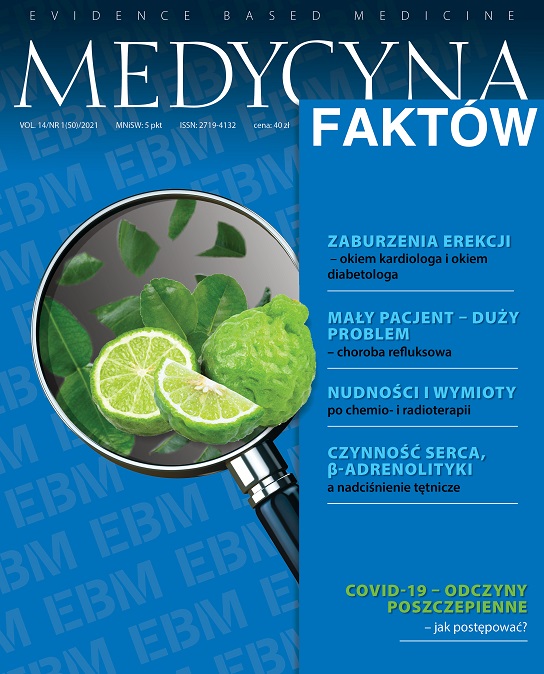The single-pill combination or hybrid therapy in prevention of cardiovascular risk. Case reports Case report
Main Article Content
Abstract
In Polish population many patients with comorbid hypertension and hypercholesterolemia present low compliance and adherence to medical advising. The achievement of therapeutic goals of blood pressure control and hypercholesterolemia control was about 5,4% in WOBASZ II study. The therapy with antihypertensive drugs and statin in a single-pill combination (SPC) has recently been strengthened in the European and Polish guidelines for the treatment of arterial hypertension and hypercholesterolemia. It seems that therapy induction with SPC by reducing the number of pills to be taken daily could contribute to solve the problem of not undertaking or discontinuing treatment. The combination product present in different doses give possibility of optimization treatment. The use SCP on a larger scale could improve blood pressure control and cholesterol concentration reduction and prevent many of cardiovascular events.
Article Details
Copyright © by Medical Education. All rights reserved.
References
2. Tykarski A, Filipiak KJ, Januszewicz A et al. Zasady postępowania w nadciśnieniu tętniczym – 2019 rok. Wytyczne Polskiego Towarzystwa Nadciśnienia Tętniczego. Nadciśnienie Tętnicze w Praktyce. 2019; 5(1): 1-86.
3. Ference BA, Yoo W, Alesh I et al. Effect of long‑term exposure to lower low‑density lipoprotein cholesterol beginning early in life on the risk of coronary heart disease: a Mendelian randomization analysis. J Am Coll Cardiol. 2012; 60(25): 2631-9.
4. Holmes MV, Asselbergs FW, Palmer TM et al. Mendelian randomization of blood lipids for coronary heart disease. Eur Heart J. 2015; 36(9): 539-50.
5. Silverman MG, Ference BA, Im K et al. Association between lowering LDL‑C and cardiovascu‑ lar risk reduction among different therapeutic interventions: a systematic review and meta‑analysis. JAMA. 2016; 316(12): 1289-97.
6. Mach F, Baigent C, Catapano AL et al. 2019 ESC/EAS Guidelines for the management of dyslipidaemias: lipid modification to reduce cardiovascular risk: The Task Force for the management of dyslipidaemias of the European Society of Cardiology (ESC) and European Atherosclerosis Society (EAS). Eur Heart J. 2020; 41(1): 111-88.
7. Ference BA, Ginsberg HN, Graham I et al. Low-density lipoproteins cause atherosclerotic cardiovascular disease. 1. Evidence from genetic, epidemiologic, and clinical studies. A consensus statement from the European Atherosclerosis Society Consensus Panel. Eur Heart J. 2017; 38(32): 2459-72.
8. Sundstrom J, Gulliksson G, Wiren M. Synergistic effects of blood pressure-lowering drugs and statins: systematic review and meta-analysis. BMJ Evid Based Med. 2018; 23(2): 64-9.
9. Niklas A, Flotyńska A, Puch-Walczak A et al. Prevalence, awareness, treatment and control of hypertension in the adult Polish population – Multi-center National Population Health Examination Surveys – WOBASZ studies. Arch Med Sci. 2018; 14(5): 951-61.
10. Dyrbus K, Gasior M, Desperak P et al. Characteristics of lipid profile and effectiveness of management of dyslipidaemia in patients with acute coronary syndromes – Data from the TERCET registry with 19,287 patients. Pharmacol Res. 2019; 139: 460-6.

